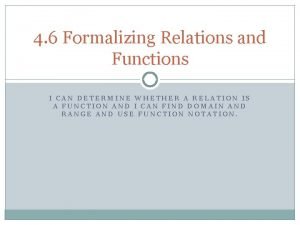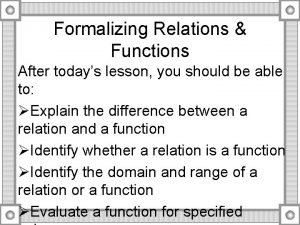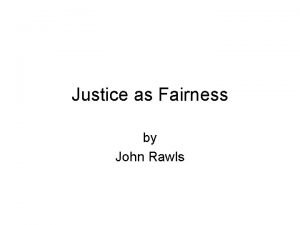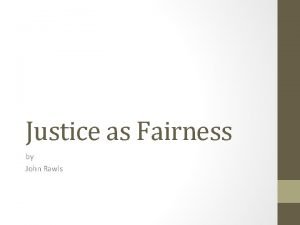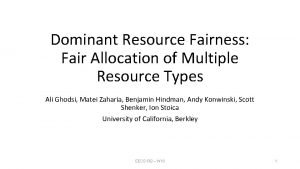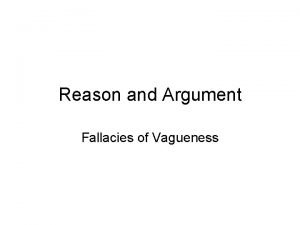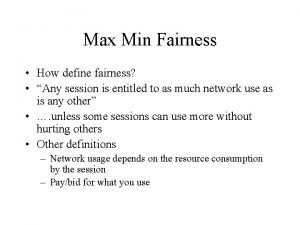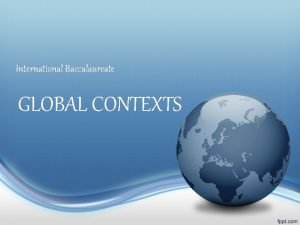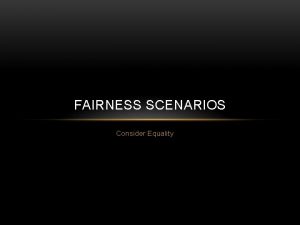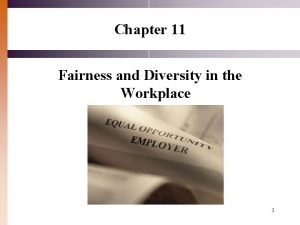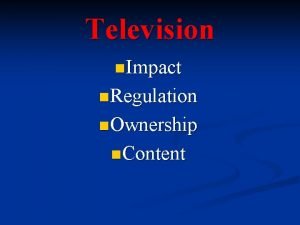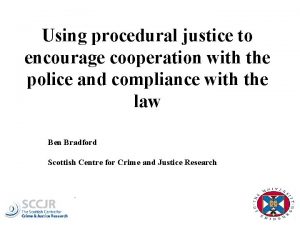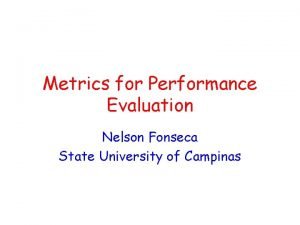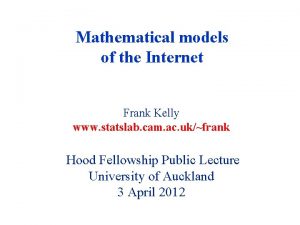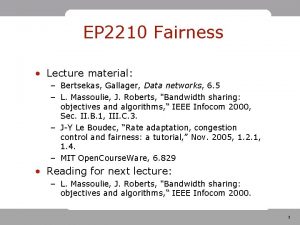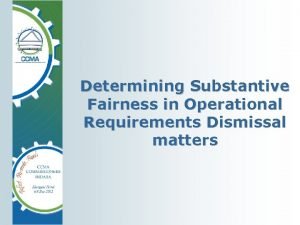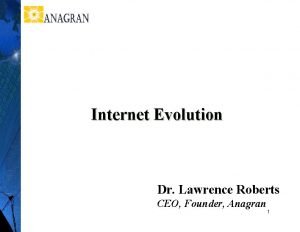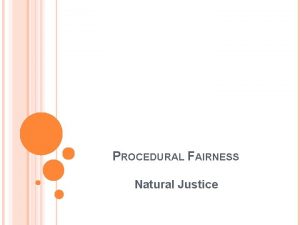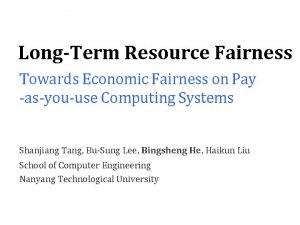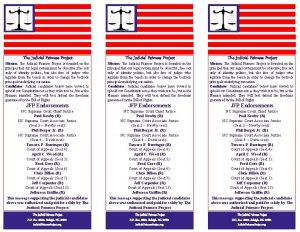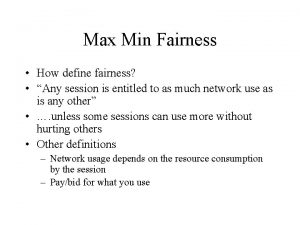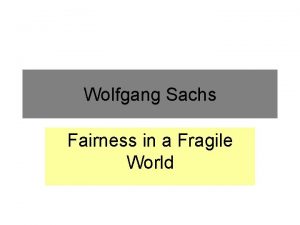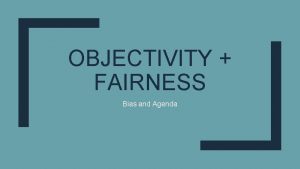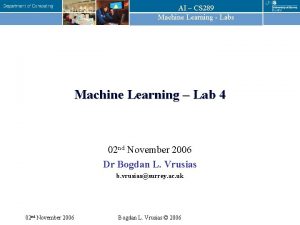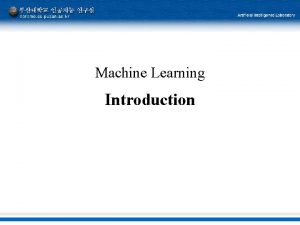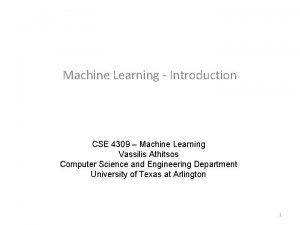Fairness in Machine Learning On Formalizing Fairness in


































- Slides: 34

Fairness in Machine Learning On Formalizing Fairness in Prediction with Machine Learning - Gajane et al. Avoiding Discrimination through Causal Reasoning - Kilbertus et al. Presented by Ankit Raj

Why do we care? Source: Tweet by DAVID HEINEMEIER HANSSON Source: Tweet by Steve Woznaik

And it became viral

Clarification from the company

Definition of Fairness ● ● Discrimination refers to unfavourable treatment of people due to the membership to certain demographic groups Illegal to distinguish based on attributes protected by law Legally protected domains/classes: Race, Color, Sex, Religion etc. Fairness in a decision making implies the designing algorithms that make fair predictions devoid of discrimination

Why important in Machine Learning ● ● ● ML increasingly being used in high-impact domains such as credit, employment, education and criminal justice These are prone to discrimination Can’t consider the ML algorithms be mystical Sources of errors: sample size disparity, biases in data ML models reflect underlying data? Need to take steps to make these models/algorithms fair

But software is not free of human influence. Algorithms are written and maintained by people, and machine learning algorithms adjust what they do based on people’s behavior. As a result […] algorithms can reinforce human prejudices. When Algorithms Discriminate by Miller [2015]

Papers on fairness - trending? Source: https: //fairmlclass. github. io/1. html#/4

Formalizing Fairness in Prediction with ML

Overview ● ● Survey how fairness is formalized in ML Present those formalizations with the notion of distributive justice from the social sciences literature Critiques of those Suggests two notions of distributive justice which address those critiques

Mathematical Formulation X: set of individuals A: set of protected attributes (those protected by law) Z: set of remaining attributes Y: set of the outcomes ● ● Individual Predictor Group-conditional predictor consists of a set of mappings, one for each group of population

What is fair? Different formalizations

Unawareness Protected Attributes are not explicitly used in the prediction process ISSUE: Other non-protected attributes might have information about the protected attributes which will impact the algorithm Distributive Justice Viewpoint: This corresponds to being “blind” to counter discrimination. It has been shown in previous study, the race-blind approach is less efficient than race-conscious approach

Counterfactual Measures Predictor ● ● is counterfactually fair, if This measure deems a predictor to be fair if its output remains the same when the protected attribute is flipped to its counterfactual value. Compares individual with different versions of themselves Social Sciences Viewpoint: relates with theory of counterfactual reasoning by Lewis ISSUES: susceptible to hindsight bias and outcome bias (i. e. evaluating the quality of a decision when its outcome is already known)

Group Fairness (Statistical/Demographic parity) Imposes the condition that the predictor should predict a particular outcome for individuals across groups with almost equal probability. ● Useful when ground truth labels not available e. g. in domains like employment, housing, credit etc. ISSUES: When disproportionality can be justified based on non-protected attributes, it may to incorrect outcomes and may amount to discrimination against qualified candidates. Distributive Justice Viewpoint: Notion of collectivist egalitarianism -- Not meritocratic and reduces efficiency

Individual Fairness A predictor is fair in terms of individual fairness if it produces similar outputs for similar individuals ● Captured by (D, d)-Lipschitz property: ISSUES: This notion delegates the responsibility of ensuring fairness from the predictor to its distance metric. If the distance metric uses the protected attributes directly (or indirectly), the predictor (satisfying above)could still be discriminatory Notion of individualism egalitarianism in the social sciences literature

Equality of opportunity ● True positive rate is same for all the groups ISSUES: It doesn’t consider the effect of discrimination due to protected attributes like gender, race etc. which have been shown to affect individual’s life prospects

Preference-based fairness So far discussed fairness imposing parity!! Preferred treatment: A group-conditional predictor is said to satisfy preferred treatment if each group of the population receives more benefit from their respective predictor then they would have received from any other predictor Preferred impact: A predictor is said to have preferred impact if it offers at-least as much benefit as another predictor for all the groups. It corresponds to the notion of envy-freeness in the social sciences literature, which is neither necessary nor sufficient for fairness

Prospective Notion - 1 Equality of resources ● ● Unequal distribution of social benefits is only considered fair when it results from the intentional decisions and actions of the concerned individuals Each individual’s unchosen circumstances including the natural endowments which should be offset to achieve fairness

Prospective Notion - 2 Equality of capability of functioning ● ● People should not be held responsible for attributes they had no say in to include personal attributes which cause difficulty in developing functionings Functionings are states of “being and doing”, that is, various states of existence and activities that an individual can undertake. Variations related to the protected attributes like age, sex, gender, race, caste give individuals unequal powers to achieve goals even when they have the same opportunities. In order to equalize capabilities, people should be compensated for their unequal powers to convert opportunities into functionings.

Avoiding Discrimination through Causal Reasoning

Overview ● Recent works on fairness depend on observational criteria ● Inherent limitations that prevent them from resolving matters of fairness conclusively ● This paper frames the problem of discrimination based on protected attributes in the language of causal reasoning ● “What do we want to assume about our model of the causal data generating process? ” ● Proposes algorithms for natural causal non-discrimination criteria

Mathematical terminologies R: predictor A: protected attributes X: features Y: outcome Observational fairness criteria depends on the joint distribution of R, A, X and Y. Possible to generate identical joint distribution for two scenarios with intuitively different social interpretations. Thus no observational criteria can distinguish them. This work uses the data generating process using causality to remove discrimination

Causal graphs and notation Cause and Effect ● ● ● ● In this paper, causal graph is a DAG whose nodes represent random variables A directed path is a sequence of distinct nodes V 1, . . . , V k The directed path is blocked by a set of intermediate blocked nodes Structural equation model represents the dependencies between connected nodes These equations are interpreted as assignments The equation model and the corresponding graph can be viewed as data generating model The predictor R maps the inputs e. g. , the features X to a predicted output

Unresolved Discrimination ● ● ● A lower college-wide admission rate for women than for men was explained by the fact that women applied in more competitive departments When adjusted for department choice, women experienced a slightly higher acceptance rate compared with men What matters is the direct effect of the protected attribute (here, gender A) on the decision (here, college admission R) that cannot be ascribed to a resolving variable such as department choice X

Unresolved Discrimination Skeptic viewpoint: All paths from the protected path A to R are problematic unless they are justified by a resolving variable. The presence of unresolved discrimination in the predictor R is worrisome and should be corrected. Naive way to solve this to consider features that do not exhibit unresolved discrimination

Proxy discrimination and interventions ● Protected attributes, A have proxies P, such as name, visual features, languages spoken etc. in the features ● In ML, one would want to separate A from its proxies ● Intervention based on proxy variables poses a more manageable problem ● We envision the proxy to be a clearly defined observable quantity, which is highly correlated with A, yet in our view shouldn’t affect prediction

Potential proxy discrimination Benevolent viewpoint: we allow any path from A to R unless it passes through a proxy variable P, which we consider worrisome. Naive way to solve this to constrain the predictor to use only those features which don’t have proxy. In the proposed approach , they aim for canceling the effect of proxies on the features that exhibit potential proxy discrimination by explicit dependencies on proxies

Avoiding proxy discrimination

Avoiding proxy discrimination

Avoiding unresolved discrimination

Avoiding unresolved discrimination

Conclusions ● ● Key concepts of their conceptual framework are resolving variables and proxy variables Develop a practical procedure to remove proxy discrimination given the structural equation model and analyze a similar approach for unresolved discrimination. Framework is limited by the assumption that we can construct a valid causal graph The causal perspective suggests a number of interesting new directions at the technical, empirical, and conceptual level

Thank You!
 On formalizing fairness in prediction with machine learning
On formalizing fairness in prediction with machine learning Formalizing relations and functions
Formalizing relations and functions Lesson 4-6 formalizing relations and functions answers
Lesson 4-6 formalizing relations and functions answers Concept learning task in machine learning
Concept learning task in machine learning Analytical learning in machine learning
Analytical learning in machine learning Pac learning model in machine learning
Pac learning model in machine learning Machine learning t mitchell
Machine learning t mitchell Inductive and analytical learning
Inductive and analytical learning Inductive learning approach
Inductive learning approach Instance based learning in machine learning
Instance based learning in machine learning Inductive learning machine learning
Inductive learning machine learning First order rule learning in machine learning
First order rule learning in machine learning Eager vs lazy classification
Eager vs lazy classification Deep learning vs machine learning
Deep learning vs machine learning Cuadro comparativo entre e-learning b-learning y m-learning
Cuadro comparativo entre e-learning b-learning y m-learning Veil of ignorance meaning
Veil of ignorance meaning Veil of ignorance example
Veil of ignorance example Dominant resource fairness
Dominant resource fairness Fairness slippery slope
Fairness slippery slope Max-min fairness example
Max-min fairness example Ib global contexts
Ib global contexts Fairness scenarios
Fairness scenarios Fairness and diversity in the workplace
Fairness and diversity in the workplace The fairness doctrine
The fairness doctrine The fairness doctrine
The fairness doctrine Procedural fairness
Procedural fairness Fairness
Fairness Fairness
Fairness Keva cream
Keva cream Max-min fairness
Max-min fairness Substantive fairness
Substantive fairness Fairness adjective
Fairness adjective Fairness and flawless ceo
Fairness and flawless ceo Finite state machine vending machine example
Finite state machine vending machine example Mealy and moore machine
Mealy and moore machine

